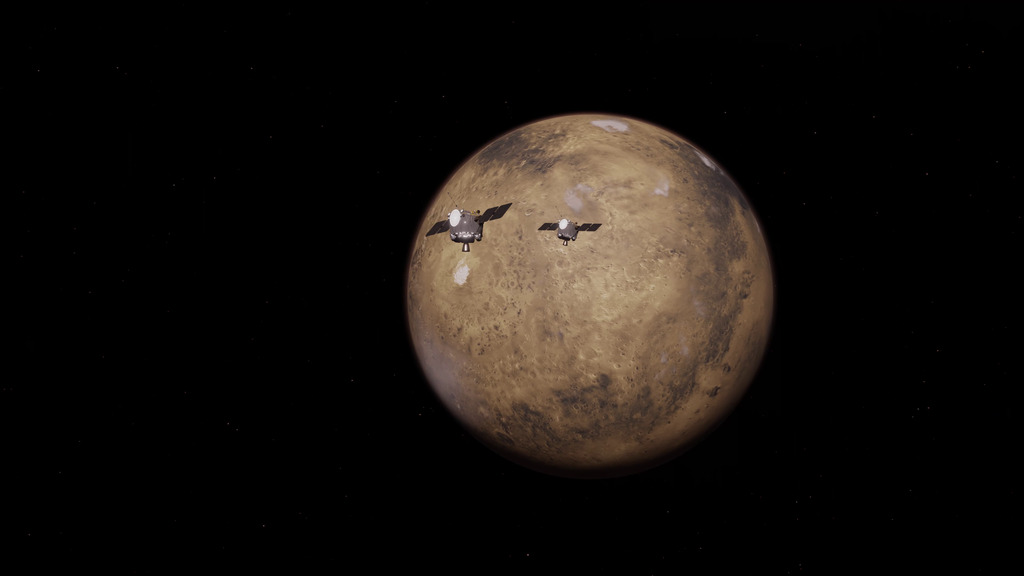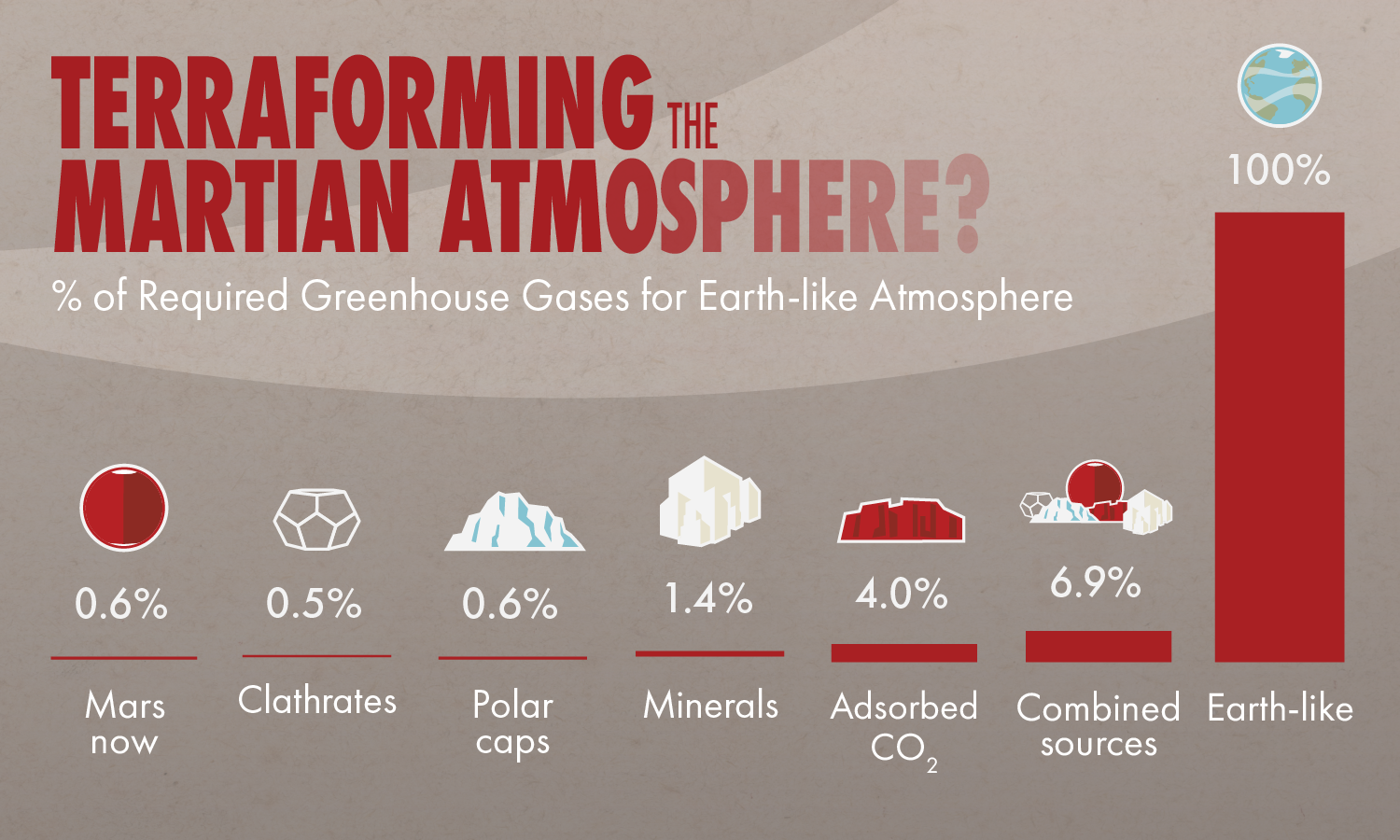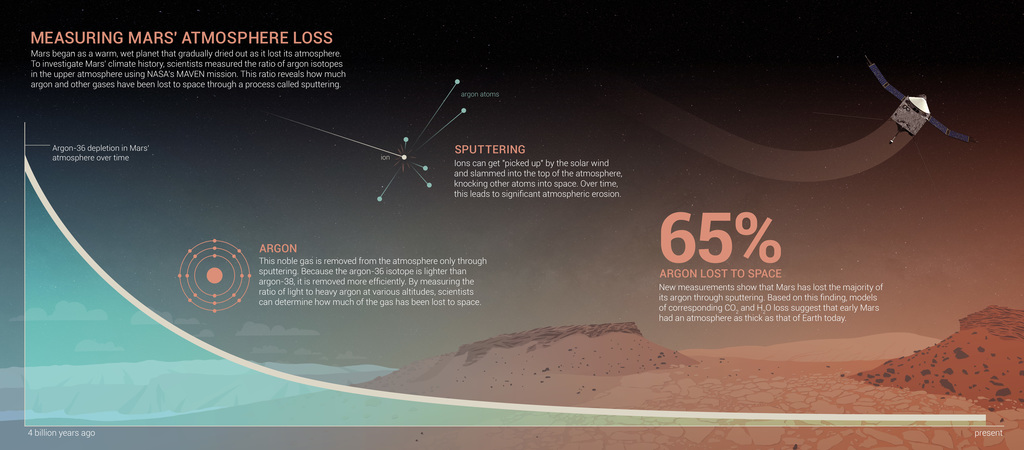MAVEN Infographic: Martian Dust Storms Accelerate Water Loss

This illustration shows how water is lost on Mars normally vs. during regional or global dust storms. Text-readable PDF version.
Credits: NASA/Goddard/CI Lab/Adriana Manrique Gutierrez/Krystofer Kim
Scientists using an instrument aboard NASA’s Mars Atmosphere and Volatile EvolutioN, or MAVEN, spacecraft have discovered that water vapor near the surface of the Red Planet is lofted higher into the atmosphere than anyone expected was possible. There, it is easily destroyed by electrically charged gas particles, or ions, and lost to space.
The warm summer temperatures and strong winds associated with dust storms help water vapor reach the uppermost parts of the atmosphere, where it can easily be broken into its constituent oxygen and hydrogen, which then escape to space. Previously, scientists thought that water vapor was trapped close to the Martian surface like it is on Earth.
The researchers measured 20 times more water than usual over two days in June 2018, when a severe global dust storm enveloped Mars. They estimated Mars lost as much water in 45 days during this storm as it typically does throughout an entire Martian year, which lasts two Earth years. Learn more about this discovery.

This graph shows how the amount of water in the atmosphere of Mars varies depending on the season. During global and regional dust storms, which happen during southern spring and summer, the amount of water spikes.
Credits: University of Arizona/Shane Stone/NASA Goddard/Dan Gallagher
For More Information
See the following sources:
Credits
Please give credit for this item to:
NASA's Goddard Space Flight Center
Conceptual Image Lab
-
Producer
- Dan Gallagher (USRA)
-
Graphic designers
- Adriana Manrique Gutierrez (USRA)
- Krystofer Kim (USRA)
-
Writer
- Lonnie Shekhtman (ADNET Systems, Inc.)
-
Scientists
- Shane Stone (The University of Arizona/LPL)
- Roger Yelle (The University of Arizona/LPL)
- Mehdi Benna (UMBC)
- Paul Mahaffy (NASA/GSFC)
- Bruce Jakosky (LASP)
-
Support
- Walt Feimer (KBR Wyle Services, LLC)
- Aaron E. Lepsch (ADNET Systems, Inc.)
Missions
This page is related to the following missions:Release date
This page was originally published on Friday, November 13, 2020.
This page was last updated on Tuesday, October 15, 2024 at 2:52 PM EDT.
![During its first decade at Mars, MAVEN has helped to explain how the Red Planet evolved from warm and wet into the cold, dry world we see today. Complete transcript available.Universal Production Music: “Executive Deceit” by Samuel Karl Bohn [PRS], Chalk Music [PRS]; “Quasar” by Ross Stephen Gilmartin [PRS], Chappell Recorded Music Library Ltd [PRS]; “Modular Odyssey” and “Synthology” by Laetitia Frenod [SACEM], Koka Media [SACEM]Watch this video on the NASA Goddard YouTube channel.](/vis/a010000/a014600/a014690/MAVEN-10th-Anniversary-Preview.jpg)


